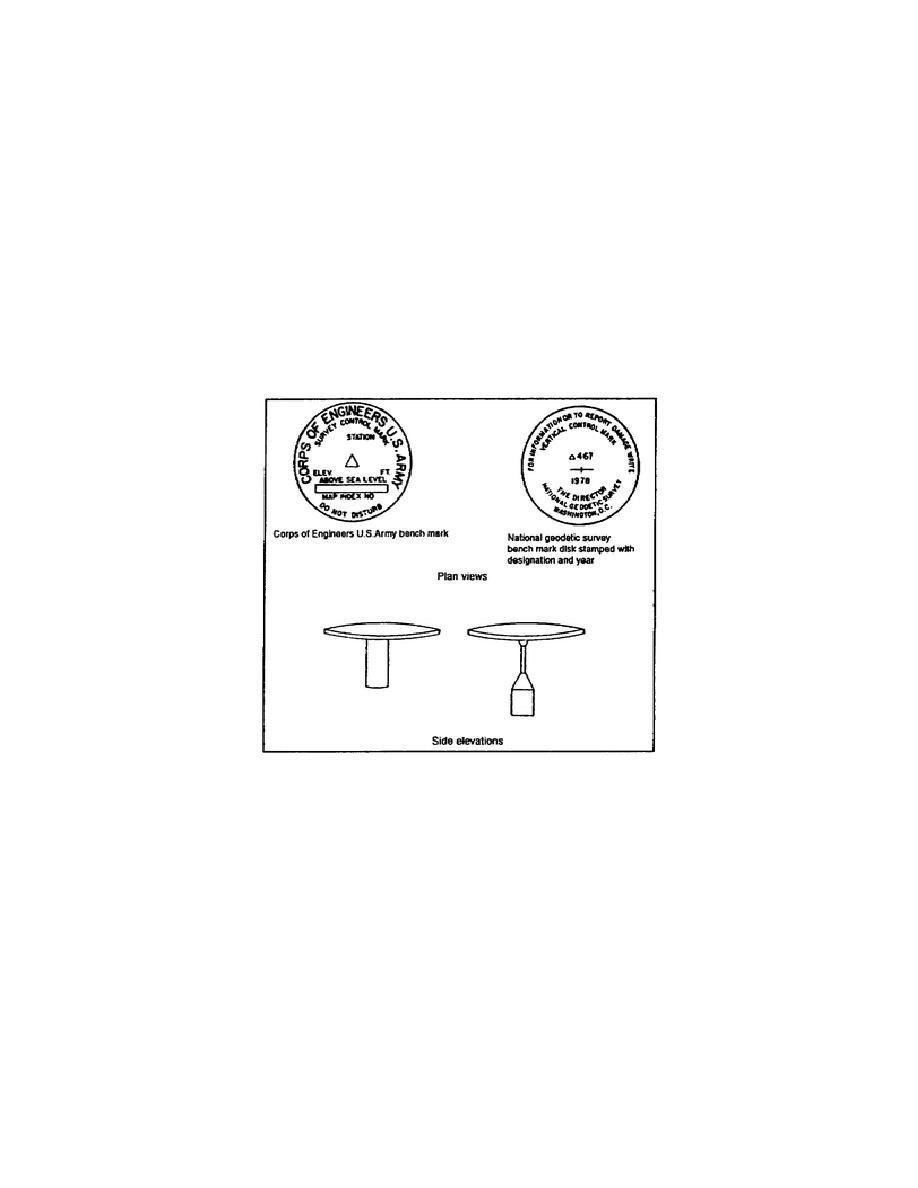
(c) Crosscuts on Existing Concrete Structures or Rock Outcrops. Points on concrete or
stone surfaces are often marked with an X by using a hammer and chisel. Another way to do this is to
cut holes with a star drill and then plug them with lead.
(d) Metal Pipe. Metal pipe (usually called iron pipe regardless of the actual metal used)
runs in lengths of about 18 to 24 inches. Sawed-off lengths of pipe have open ends; pipes cut with a
shear have pinched ends and are called pinch pipe. There are also manufactured marker pipes that are
T-shaped rather than cylindrical in cross section. A commercial marker may consist of a copper-plated
steel rod. All commercial markers have caps or heads that permit center punching for precise point
location and stamping of the identifying information.
(e) Concrete Monument. Concrete monuments often have a short length of brass rod set
in them to mark the exact location of the point. Federal surveying agencies using concrete monuments
as permanent markers set identifying disks in them (see Figure 5-25).
Figure 5-25. Brass Disks
(f) Brass Disk. Manufactured brass disks, similar to the ones shown in Figure 5-25, may
be set in grouted holes in street pavements, sidewalks, steps, or the tops of retaining walls.
b. Marking Materials. Keel (lumber crayon) is a thick crayon used for marking stakes or other
surfaces. Common marking devices that contain a quick-drying fluid and a felt tip are also popular for
marking stakes. All of these types of graphic marking materials come in various colors.
In addition to keel, paint is used to mark pavement surfaces. Paint may be brushed on or sprayed from a
spray can. To make the location of a point conspicuous, use a circle, a cross, or a triangle.
EN0591
5-22



 Previous Page
Previous Page
